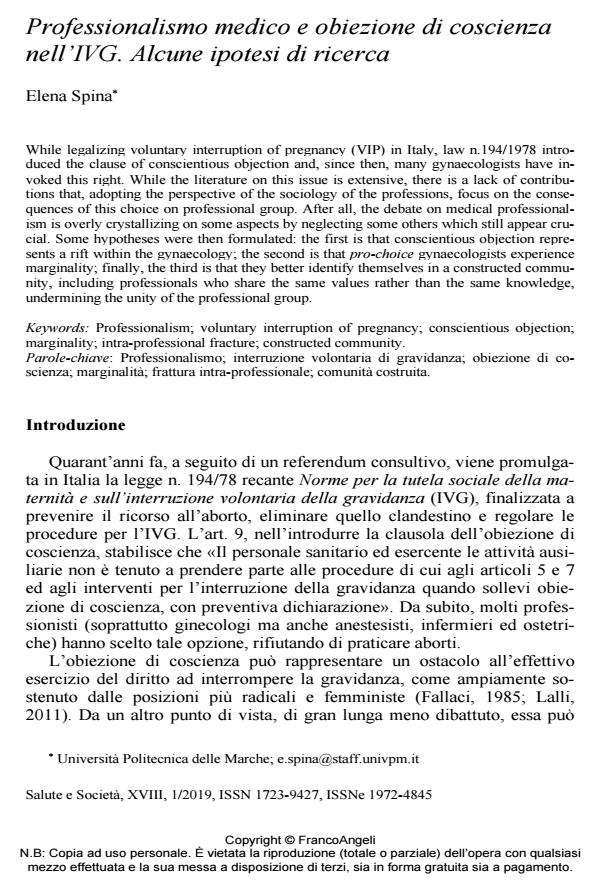Professionalismo medico e obiezione di coscienza nell’IVG. Alcune ipotesi di ricerca
Titolo Rivista SALUTE E SOCIETÀ
Autori/Curatori Elena Spina
Anno di pubblicazione 2019 Fascicolo 2019/1
Lingua Italiano Numero pagine 17 P. 117-133 Dimensione file 182 KB
DOI 10.3280/SES2019-001008
Il DOI è il codice a barre della proprietà intellettuale: per saperne di più
clicca qui
Qui sotto puoi vedere in anteprima la prima pagina di questo articolo.
Se questo articolo ti interessa, lo puoi acquistare (e scaricare in formato pdf) seguendo le facili indicazioni per acquistare il download credit. Acquista Download Credits per scaricare questo Articolo in formato PDF

FrancoAngeli è membro della Publishers International Linking Association, Inc (PILA)associazione indipendente e non profit per facilitare (attraverso i servizi tecnologici implementati da CrossRef.org) l’accesso degli studiosi ai contenuti digitali nelle pubblicazioni professionali e scientifiche
While legalizing voluntary interruption of pregnancy (VIP) in Italy, law n.194/1978 intro-duced the clause of conscientious objection and, since then, many gynaecologists have in-voked this right. While the literature on this issue is extensive, there is a lack of contributions that, adopting the perspective of the sociology of the professions, focus on the consequences of this choice on professional group. After all, the debate on medical professionalism is overly crystallizing on some aspects by neglecting some others which still appear crucial. Some hypotheses were then formulated: the first is that conscientious objection represents a rift within the gynaecology; the second is that pro-choice gynaecologists experience marginality; finally, the third is that they better identify themselves in a constructed community, including professionals who share the same values rather than the same knowledge, undermining the unity of the professional group.
Parole chiave:Professionalismo; interruzione volontaria di gravidanza; obiezione di coscienza; marginalità; frattura intra-professionale; comunità costruita.
Elena Spina, Professionalismo medico e obiezione di coscienza nell’IVG. Alcune ipotesi di ricerca in "SALUTE E SOCIETÀ" 1/2019, pp 117-133, DOI: 10.3280/SES2019-001008